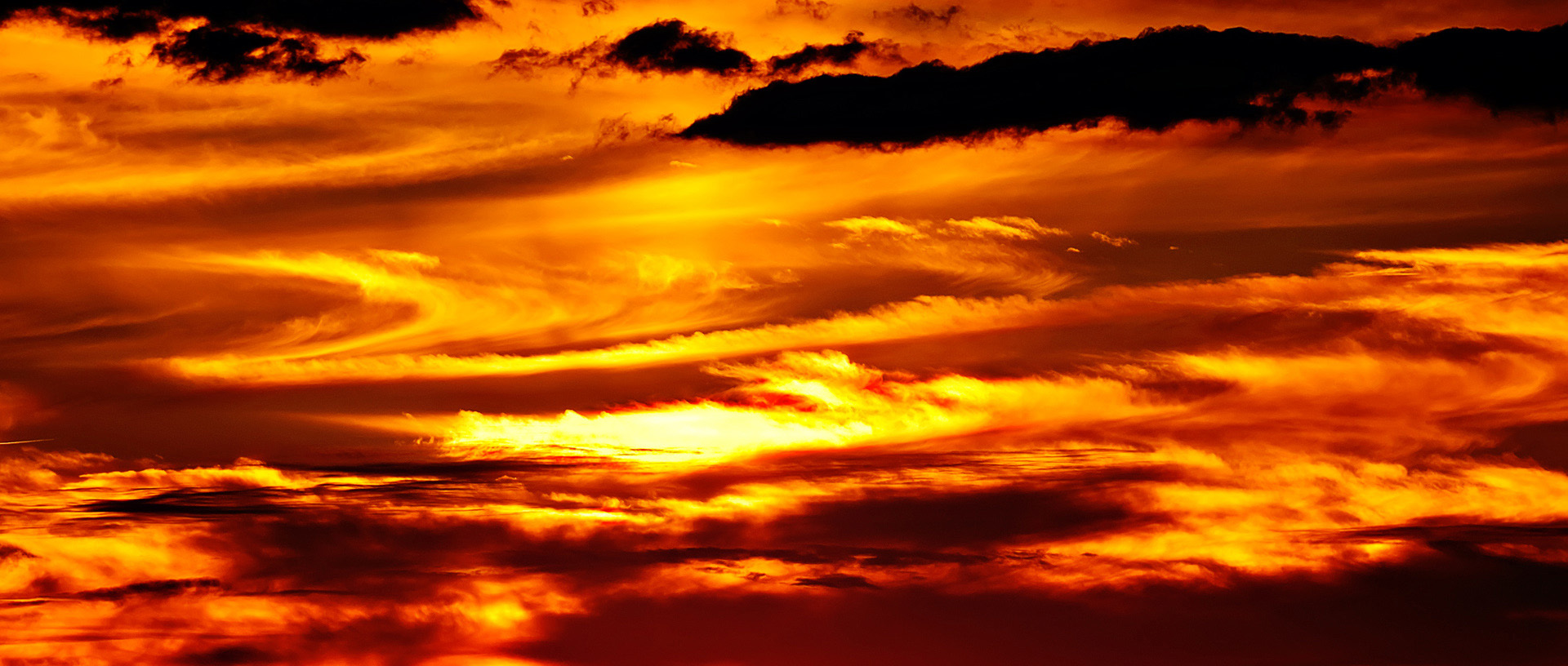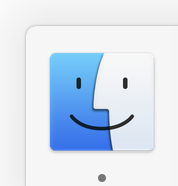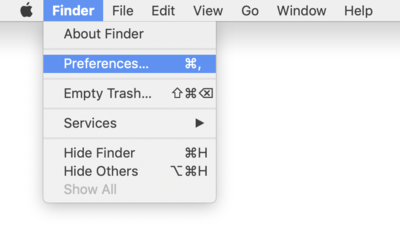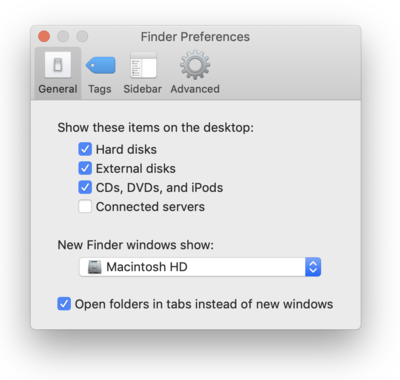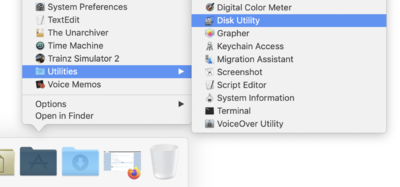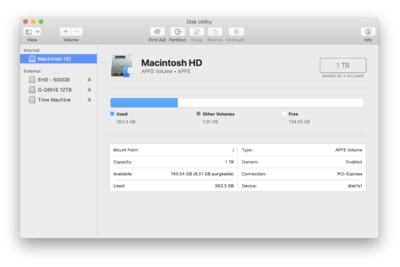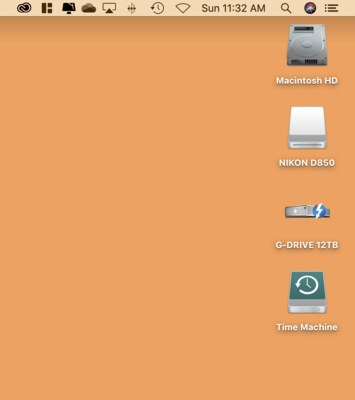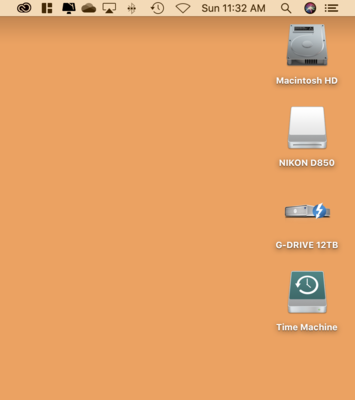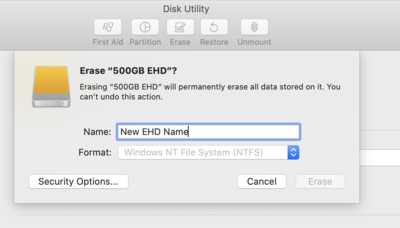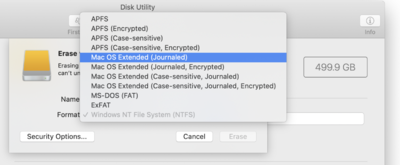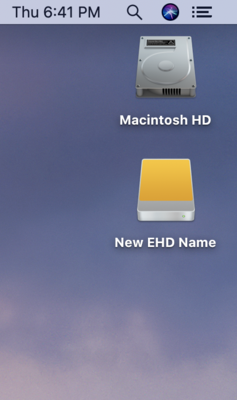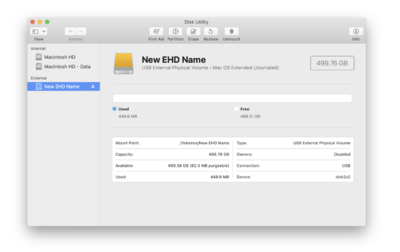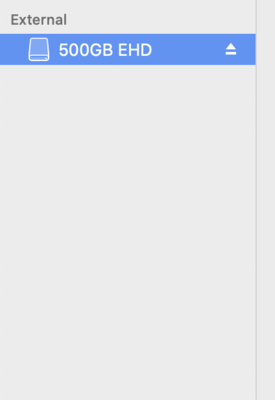-
Posts
4,084 -
Joined
-
Last visited
-
Days Won
47
Everything posted by Brian
-
TOLD YOU!!! Just think, Apple wants to charge you $1000 to do this very same thing.
-
One more thing... Don't bother worrying about upgrading to Windows 11. You really should be saving up to purchase a new computer that comes with Windows 11. I fear prices won't come down until at least 2023 and it's THE absolute worst time to be in the market for a new computer. Prices are triple to quadrupal to what they should be. A "Good Windows Computer for Photo Editing" will run you around $3000. Yep, you read that correctly. $3000...and that's for a Stinkin' Dell Computer!! Not some fancy Gaming Rig. A blasted Dell! That same computer would have been $1200-$1500 a few years ago, before COVID19 hit. So start saving. Resist the FOMO.
-
The "Standard" these days is has it always has been. the 3-2-1 Backup Strategy Three copies of your files On Two different devices / storage mediums One of these backups kept off-site. Of course, many people don't follow this rule, and that's understandable. Having three copies of everything is a little crazy, especially if you don't have any true organizational structure, and your hard drive(s) are mostly dumping grounds with crap all over the place. If this sound remotely familiar, you need to stop what you are doing and start culling and coming up with a plan. Even if you have to write it out on a piece of paper first. Specifically, how would you create a Folder Structure? Keep it simple and to the point. Make sure things are easy to find, and once you do get organized, stick with it. Laziness will eventually take over again and when stuff goes bad, you will be in a panic. Trust me. Now, the first step is to purchase an External HD. That is still the easiest way to backup. As far as the Cloud goes, all the "Cloud" is...is someone else's Computer / Server. A lot of the times, a Cloud Service will want to keep a set of files stored locally on your computer, and have duplicates saved on its Storage Servers. Now, this is normally a bad thing Why? Because if you delete the file that is stored locally on your computer, usually within 30 Days that same file will be automatically removed on the Cloud Storage. So don't ever-ever-ever...LIKE EVER treat a Cloud Service as an External HD. Combined with that issue is you really need decent Internet Speeds if you have a lot of files. That said, you have lots of options when it comes to Hard Drives. You can even go as far as spending $$$ on a NAS (Network Attached Storage) which is your own personal "Cloud." It all boils down to the first question that I'm always asking: What is your budget?
-
I'm holding off for now. At least until 2025; that is the year that Microsoft will end support for Windows 10. They are changing the rules and older hardware isn't supported. So unless you have a Motherboard that has a TPM 2.0 chip, a recent i7 or better yet, i9 CPU, don't bother. Honestly? Even if I had all of these things, I wouldn't be installing Windows 11 on my main computer for at least a year.
-
You will blow that much on just the camera body, never-mind the lens. What type of YouTube Channel are you going to be doing? The reason I ask, is it's not just the camera / lens, but the lighting and microphones. If you are out and about, that setup will be one thing. If you are doing commentary videos, like Jeannie & Henry from MXR, that's another setup.
-
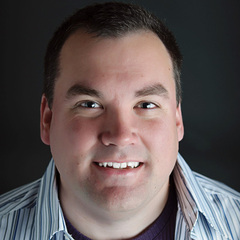
Just tell me what to buy pretty please!
Brian replied to Yvette J's topic in The Windows & PC Hardware Forum
Ah Gotcha!! Yes, $500-ish is totally do-able for both a display and calibration device. Here is one of Dell's newer 27" IPS Displays. If you don't want to go as big as 27", they have a 24" version. Here is last year's model and is still worth buying. It's IPS, which is what you want, and has a anti-glare coating on it. For $330 and 27"...it's a good buy. So $330 thus far. Now time for the Calibrator. There are a couple of choices. IF you are going to calibrate both your laptop's Display AND External Display, and want to obtain the best chance of them matching, it's better to get something like the SpyderX Elite or the X-Rite i1Display Pro. Of course, these are the two top-of-the-line calibrators, and their prices reflect that. You can go the next level down and pay about $170-ish. -
OH HELL YES YOU NEED MORE RAM. LOL!! Your poor computer, it must be struggling so much, begging for more resources. It's good that you have a 2015 27" iMac, you can upgrade the RAM yourself. Takes about 5-10 min to do. What you are going to do, is remove the existing RAM and install Four 8GB Sticks. To answer your question, you have to install the same RAM chips in matching pairs. So while you can leave the two existing 4GB sticks installed, just max it out to 32GB and be done with it. Seriously. Here is the RAM I want you to purchase. It's $183.98 to max out your RAM to 32GB. Yes, it's worth it. Yes, it's a bit more expensive than just installing two extra sticks, but we do have the Chip Shortage going. So don't sit on this. Even though prices are a little higher currently, this RAM Kit isn't too bad. (It's about $30 more than it was a year ago.) Here is a quick YouTube Video demonstrating the process. The only thing I'd like to add is you want to touch something metal to discharge any Static Electricity before handling the RAM Sticks. RAM doesn't like to be zapped by Static Electricity. When you get up to 32GB, you will wonder why you didn't do it sooner.
-
That's a mistake right there that trips up A LOT of people. Always remember... YOUR CAMERA'S LCD IS A LYING AND CHEATING WHORE WHO WILL SELL YOU DOWN THE RIVER IF GIVEN THE CHANCE!!! The image you see on your camera's LCD is the JPEG PREVIEW embedded within the Raw File and NOT, I REPEAT...NOT the Raw File itself. So don't EVER think that just because you see the image on the Camera's LCD you are safe. Quite the opposite, if the Raw Image is corrupted, you might only get the JPEG Preview out of the file recovered. That's why your image goes from #Amazeballz to #Blah in either ACR or LR. The "Blah" image IS the Raw file. (Well, Adobe's interpretation of said file.) You could have a faulty Card Reader. The one I linked to above does both CF and SD Cards and for $20.50, it's not going to break the bank. Now, I want you to get your EHDs and Cards displaying on the Mac Desktop. Follow my instructions in Part 2 of this Article. It is a possibility. That said, SD Cards are not very robust. They go bad all the time. Hell, if you look at them weird they will corrupt. But I really want you to get a new Card Reader, preferrable one that is both CF / SD and try using the CF Card that you have.
-

Just tell me what to buy pretty please!
Brian replied to Yvette J's topic in The Windows & PC Hardware Forum
No. $500? Not happening! Not in 2021. Seriously, now is THE ABSOLUTE WORST TIME TO BE IN THE MARKET FOR A NEW COMPUTER!!! There is COVID-19 happening, which is causing factories to be shut down, which then creates a limited supply of little pieces that make up the bigger pieces that makes up a computer. $500 just isn't going to cut it. Not for a laptop that is "Good for Photo Editing." Sorry Dear... you are looking at spending around $3000. Yes, I'm dead serious. Even if you opted to go for a desktop computer, you are looking at spending between $2500-$3000...and that's for a stinkin' Dell Computer!!! Prices have tripled over the past year, and that's when they are "On Sale." Video Cards alone that would have cost about $600 in 2019, and I'm talking about the fancy ones that Gamers use, are selling for $1500+, all by themselves. I wrote this article for folks that are in your situation... Buying a Computer in 2021 My recommendation: Keep saving. At the very least, you need to have $2000 saved up. I have a feeling prices won't go back to "Normal" (whatever that is) until 2023. Basically, the components that make up a laptop that's "Good for Photo Editing" were hard to find BEFORE COVID19 hit. Now it's like they are almost damn near-impossible to find, and certainty not at a $500, or even a $1000 price-point. Yes. It sucks. -
How are you transferring the images to your computer? Are you "Moving" or "Copying" the files? Does your SD Card Show up on the desktop? Also, are you ejecting the SD Card before removing it? Your friend's are correct, the slot on your Mac could be faulty, or if you have an extra-fancy fast card, may not be 100% compatible with your reader. Do you have any CF Cards? The reason I ask is SD Cards fail all the time. Out of all of my cards that have failed for me personally, the SD Cards I've had the most problems with. I've had a CF or 2 card go "iffy" on me, and I retired it and only one CF Card that did actually fail...and I have lots of cards. At this point, it could be a faulty controller chip in the camera, bad slots on the camera or you have something else going on. Unfortunately, I don't have a "Magic Bullet" for you, What I would recommend is to purchase a CF Card and a CF Reader and try that card/techology. I will warn you, CF media is on it's way out and the pickings are getting a bit slim. That said, I still feel we need to remove the SD media from the equation before I have you send your camera to Nikon for repairs. You could get a Sandisk 32GB CF Card, that's just under $40 and a CF Reader that also reads SD Cards for about $21. So call it $65-ish to test things. This will be cheaper than a diagnostic fee from Nikon.
-
The only advice I can give in that dept., is to never-ever-ever show a Mom the slightly out-of-focus, underexposed photo that doesn't print well. She will pick that photo every damn time because "She likes her baby's smile in that one..." EVERY. BLOODY. TIME.
-
Yep. Photographers are funny creatures. We are a weird bunch. Never assume anything, especially if they view you as a potential threat. People also drink the Kool-Aid and think Lightroom is all that you need to edit photos. It usually isn't. Honestly, it's better to make friends with someone a few States away, or at least a few hundred Miles/Kilometers in between the two of you, so you are in different markets. Even then take what they say with a grain-of-salt. Hell, I've known of Photographers who give workshops and tell their students to use a certain light, like an Alien Bee for a few hundred, and they themselves use a $2000+ Profoto Light! They purposely sabotage their students so they can make money off of them, and still retain an "edge" over said students. Honestly, the quickest way to make money at Photography is to sell to other Photographers, not getting true clients. This saying is very true: Amateurs worry about the Gear (Or blame it) Professionals worry about the Money Masters worry about the Light Start with the Bridge Class. It's $10. That's a Large Plain Pizza near my house or a Cup of over-priced Iced Coffee from Starbucks. If you don't like Damien's teaching style, it's only $10. But I think you will start to find errors in your workflow and will continue onto the Raw Class.
-
This is the problem with LR. It's all marketing hype. Adobe really took a page from Apple's Marketing book. Seriously. Lightroom is great when you don't give a shit about color. When you need to deliver 3000+ images within 15 minutes to a client. It's for Bulk-Editing, Sports Photographers do this on a normal basis. Even Event Photographers. So many people out there apply a store-bought preset and think that it's "editing." It's not. Then they export and wonder why their images never seem to look the same as they did in LR. What's worse, is the client noticing that something is off, or they can't print a file that you sent them, due to poor quality. Guess who isn't going to hire you again? Adobe Photoshop is the industry standard editing program for Photography, and it will be for some time. So it's truly worth learning. I haven't seen many serious contenders out there that would end up replacing it. I'm not saying that's not possible, it's just very unlikely at this point. Hell, even Kodak is no longer around, so something like this happen is plausible, but not in the immediate future. Now, I get why people like Lightroom, it's very intuitive. Click a couple things here, apply this preset, move a slider or two...and BAM!! You have a #Hashtag #Amazeballz Image!! All the Hearts and Swoons from people on FB!! They just #LOVELOVELOVE your image. Then you go and do something silly, like actually print the photo, and it looks terrible. Then you start to think, actually the JPEG didn't look like anything that you saw in Lightroom. But it must be you, right? Or your lens is bad! That's gotta be it. Tabitha-Jane from Cutesy Name Photography has a bigger and fancier camera than you, AND HAS A 50MM F/1.2 LENS!!! THAT'S GOTTA BE IT!! Nope. Lightroom is the cause of your problems. Once you figure that out and get it out of your workflow, get your screen calibrated and matching a set of physical prints, will you then understand how far off your workflow truly is. You can't buy yourself out of this. I've spent thousands and thousands on this crap, and it turns out the person who knows how to edit will produce far better images with older gear than I would with my big and fancy camera. I've got all the gear...and all I do is produce crappy photos with really nice gear.
-
I'm happy to jump in here at the end and say, the focus is fine. Nothing wrong with the lens. The real problem is how your Photoshop is setup, and your overall lack of knowledge of how to use Photoshop is what is messing you up. Plus, if you have given the client a JPEG with a Quality of 3...No wonder they can't print it!! You NEVER want to go that low!! For now, use the File >> "SAVE AS" feature, and stick with quality of "10," and if saving to Social Media, especially Facebook, set it to "11." Fortunately, your lack of knowledge is easily corrected, provided you are willing to learn. What I want you to do first, is make sure ACR and Photoshop are setup correctly. Here are some instructions, start from the top and work your way down: Setting Up Photoshop. The next thing you need to do, is take the Bridge Class, followed by the Raw Class. Then take the Layers and Masks Class. L&M is the one that really teaches you how to "Use" Photoshop. But before you are tempted into doing that one 1st, always remember that Photoshop comes AFTER your images are rock-solid and edited properly in Adobe Camera Raw (ACR)!!! Just like a foundation of a house, I don't care how expensive and pretty those Granite Countertops are in your Kitchen, if the Basement / Foundation can't support the weight of them, and is crumbling, it's not going to do you any good when the Kitchen collapses. Got it?
-
"Smart Update" compares the files on the Images 1 Drive to the Images 2. If there is a change, usually with file-size and/or date & time, it will back up those files only, since Images 2 already has the other files after the first full backup. Basically, it's a "Incremental" backup and only backs up the files that have changed. Which saves a lot of time. "Erase Images" (the one you have selected in the screenshot above) is the brute force method. It erases the files on Images 2 and then copies over the files from Images 1. This could be a good thing or a bad thing... Good that you have a 100% clone each and every time. Bad if there is data corruption on Images #1 or you did something to one of your images (or screwed something up), with the Erase/Brute-Force Method, you won't be able to go back in time and get the original file before SuperDuper runs. Since that file will be erased by SuperDuper and the corrupted file would have been copied over. Make sense? If you choose the "Smart Update" and schedule the clone once every few days, you have a small window to copy the untouched file from the Images 2 drive. If that sounds like a feature you'd like to have as a fail-safe, use "Smart Update." If not, use the default choice. "Repairing Permissions" is one of those normal Mac-Maintenance things that should be done every once-and-awhile. Because the MacOS is based on an Operating System called Unix (Pronounced You-Knicks) it has things called "Permissions" on each of the files. Sometimes those Permissions get out of whack and need to be reset according to the "Master List" that the OS has records of. Basically, that setting is meant for how conservative do you want SuperDuper to be? Do you want it to repair permissions to the Images 1 EHD before it copies the files? Since you are primarily backing up Photos and such, I'd say no. That's not to say that you should never repair permissions once-and-awhile, it's just every time seems a bit much.
-
Why are you saving at a quality of 3? I’d like you to use 10.
-
Also, what lights where you using? Alien Bees? Flashes? Strobes? What power were they set to?
-
OK, I need the details: Aperture | Shutter Speed | ISO Which focusing Mode and where was your focus point? Because the only reliable Focus Point with a 6D is the Center AF Point. (I mentioned this above.) Plus it doesn't help that you look to be in a small space, so I'm thinking f/8 or even f/11 might have been a better choice. f/5.6 may not give you enough Depth of Field. Which is what I'm really leaning towards in this photo. From what I can tell, it's about 4-5 feet between the front row of faces and back row. That's a lot content that you want in focus. Oh, I need a 700x700 crop of the original photo of where you put the AF point. Follow these instructions: https://www.damiensymonds.net/2013/09/grabbing-700x700px-100-crop.html
-
OK, simply put, SuperDuper wants control of the situation. This is what happens when you use programs to do stuff for you. It needs to create a log of what's on Images 1 and then make sure that it successfully goes to Images 2. By now, all of your images should be on the Images #1 Drive, correct? If so, let it erase Images 2 and let it do its thing. Edit: There are primarily two kinds of backups. Incremental and Full. SuperDuper is going to make a Full Backup to Images #2 from #1 and then will probably do Incremental backups (the changes you make to images 1) going forward, after the Full Backup. For all intents and purposes, keep saving things to Images 1!! Images 2 is just for cloning, not usage. If you were looking for two hard drives to be a Mirror of each other at all times, that's a RAID1 Setup and a completely different thing. In fact, I would not even call that EHD "Images 2," I'd name it something else, like "Clone" or "Off-Site Backup."
-
Oh, I didn’t answer one of your questions! Once we get your EHDs partitioned to a genuine Mac Format, software programs won’t have any trouble reading them. Unfortunately, I’m thinking any new EHD that you buy today has a good chance of being ExFAT. But I could be wrong. Basically, any new EHD that you buy, you just need to check it and see if it’s ExFAT or NTFS. If it is, just follow my directions above and change it to a Mac only drive. Easy Peasy.
-
Once you are sure that everything made it's way to Photos 2, right-click on the drive and eject it. Then do the same thing above for your Photos 1 drive, erase, format, rename, etc. Then hook up Photos 2 again. (You might have to power cycle the drive or pull out the USB cable and re-seat it.) Let it mount, and then do a Select-All and Copy & Paste from Photos 2 to Photos 1. At this time, each drive will be a mirror of each other and now should appear in SuperDuper.
-
After you get your "Photos 2" Drive Erased / Partitioned / Formatted, go ahead and plug in the Photos 1 Drive and let it mount. Both HDs should appear on your desktop. Simply open Photos 1 and do a "Select All," then right-click and select COPY. Open the freshly formatted Photos 2 Drive and Right-Click and select "Paste." Or press & hold the Command Key while tapping V. This will (paste) copy the files from one EHD to the next. (Self Explanatory, I know.) The reason I'm pointing this out, is if you do a copy and paste and something screws up during the process, you can cancel and try again. If you do a "Cut & Paste" you are moving the files...and if something bad were to happen, you aren't getting those files back. This happened to me once, with a customer's data that they didn't have backed up. Learned my lesson on that one, and I have been using computers since 1981!! I always used to Cut & Paste without thinking. I don't do that anymore.
-
OK, great! I want to try these instructions that I wrote out awhile ago, and you are the perfect candidate to test drive them. Let me know if you don't understand something or an item needs clarification. The first thing I want you to do, if you haven't already, is turn on the feature that allows you to see HDs and other "Mounted Devices" on your Mac Desktop. Open the Finder. The easiest way is to click the Smiley Face on your DockBar: Then head to the Finder Menu and select Preferences: Once there put checks next to these items and change the bottom to "Macintosh HD" if you want: From there, just click the Red Circle in the upper left corner to apply the changes. After you make this change, things like the Macintosh HD, any External Drives, Memory Cards from Cameras that are in a Card Reader and even portable DVD Disks will all appear on the Mac Desktop. This makes accessing them a breeze and is one of the things that has always puzzled me on why this feature isn't turned on by default. For example: First, as you saw in my example above, your new EHD should appear on the desktop, though it may not. Here is an example of currently Mounted Devices on my iMac. You should see something similar if you followed my steps above: Now the fun begins! Let's get that new Hard Drive prepped for use on the Macintosh!! Click your Applications Folder, then open Disk Utilities. Head to Applications Menu >> Utilities >> Disk Utilities. This is where your Disk Utilities might look slightly different. Anyway, here is mine: While in your Disk Utilities Module, please make note of any additional Hard Drives listed in the left column. Pay special attention to the Hard Drives listed under the "External" Section. For this process, it is much safer to only have one EHD Mounted / Listed! It is imperative that you Eject and Remove ANY EXTERNAL HARD DRIVES THAT YOU DO NOT WANT TO ERASE!!! Your Disk Utilities Window should appear as follows, with only ONE External HD listed: You can Eject the EHD from Disk Utilities, just click the little up-arrow/line next to the drive you want to remove. First select the EHD that you want to Format for use on the Mac in the left column: Then click the Erase Button at the top: Your Window should appear similar to this. At this point, give your new EHD its official name. Make it something Obvious, like WD 3TB or Client File EHD 3TB. Something recognizable and simple. You can only have so many characters for the name, so keep it short and simple: Then click the UP/DOWN arrows on the right, in the Format Section. If this was originally a Windows EHD, it will more than likely say, Windows NT File System (NTFS), or be listed as ExFAT: A list will appear as follows: For a Traditional Spinning Hard Drive, ONLY SELECT THE MacOS Extended (Journaled.) DO NOT SELECT the "Encrypted / Case Sensitive" Options! For a Flash Based Hard Drive (i.e. SSD, m.2, etc.) choose APFS. DO NOT use APFS for a Traditional Spinning Hard Drive! DO NOT SELECT the "Encrypted / Case Sensitive" Options! Again, it's either the "Mac OS Extended (Journaled)" or the plain "APFS." Do not use any other option. For the people that do use those options, have reasons to do so. For the 99.9999% of us out there, including myself, we want to keep our Partition Types as simple as possible. For the majority of users doing this, your new External HD will most likely be the "Traditional / Spinning" type/kind, as SSD/m.2 Drives tend to be extremely expensive for capacities over 1TB. As time goes on, this will definitely change, but for now your Disk Utility Window should look something like this: Simply Click the Erase Button and let the MacOS do its thing: When finished, you might get a message from the MacOS asking if you want to use the EHD for Time Machine or not. If this is a Data Drive, tell it NO! Of course, if this EHD is meant for Time Machine, tell it Yes. If everything goes as expected, and followed all of my instructions, you should see your new EHD mounted on the Mac Desktop: You will also see it as follows in the Disk Utility Module of the MacOS: That's it! That is all it takes to make your Windows Hard Drive and convert it for use on your Mac. Keep in mind that with the MacOS and the way its designed, is it treats both Internal and External Drives the same. So don't go over 75% - 80% capacity on either drive, Internal or External. The more full your hard drive is, the slower your Macintosh runs.
-
Yeah, we can go over this tomorrow. Honestly, it’s not that difficult to accomplish, we just need to approach things logically and one-at-a-time. I’m on New York Time. Sounds like you are about 6hrs ahead of me. I’m assuming that the Photos 2 is the new EHD? If so let me know and I will write up a set of instructions. Warning! We will be nuking the contents of this drive. So if there is anything important on it, be sure to back it up to another drive.
-
From what I can tell, they are two completely different systems. One has Liquid Cooling and the other one doesn't. Different CPUs, different motherboards, etc. The Liquid Cooled one probably has a fancy LED Lighting System and better case as well. Those fancy cases have much more labor involved because routing all those wires / lights and mounting a Liquid Cooling System to the CPU is tedious. It's a PITA. I'm sure the $3000+ model also has higher-end / better components.

